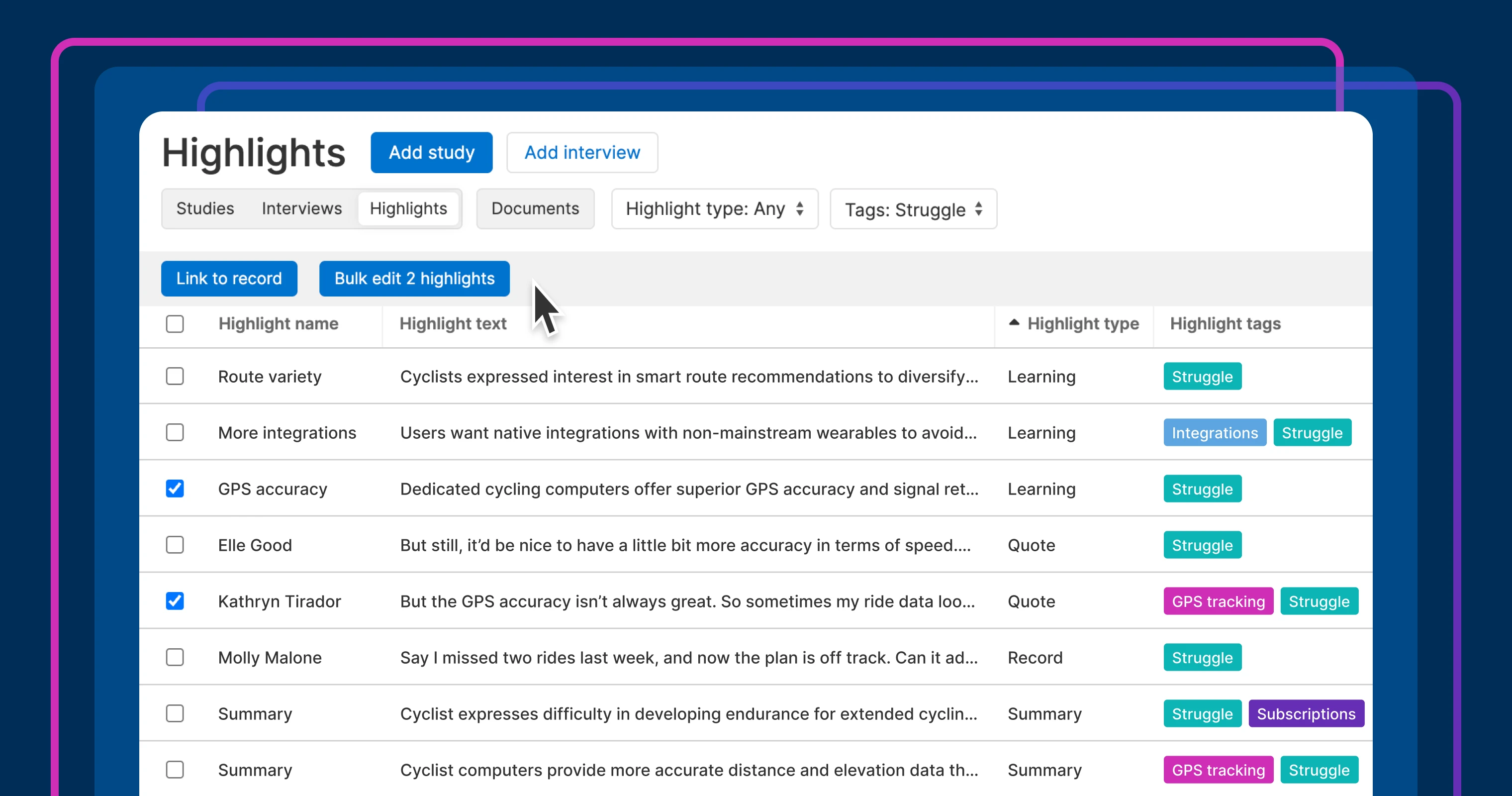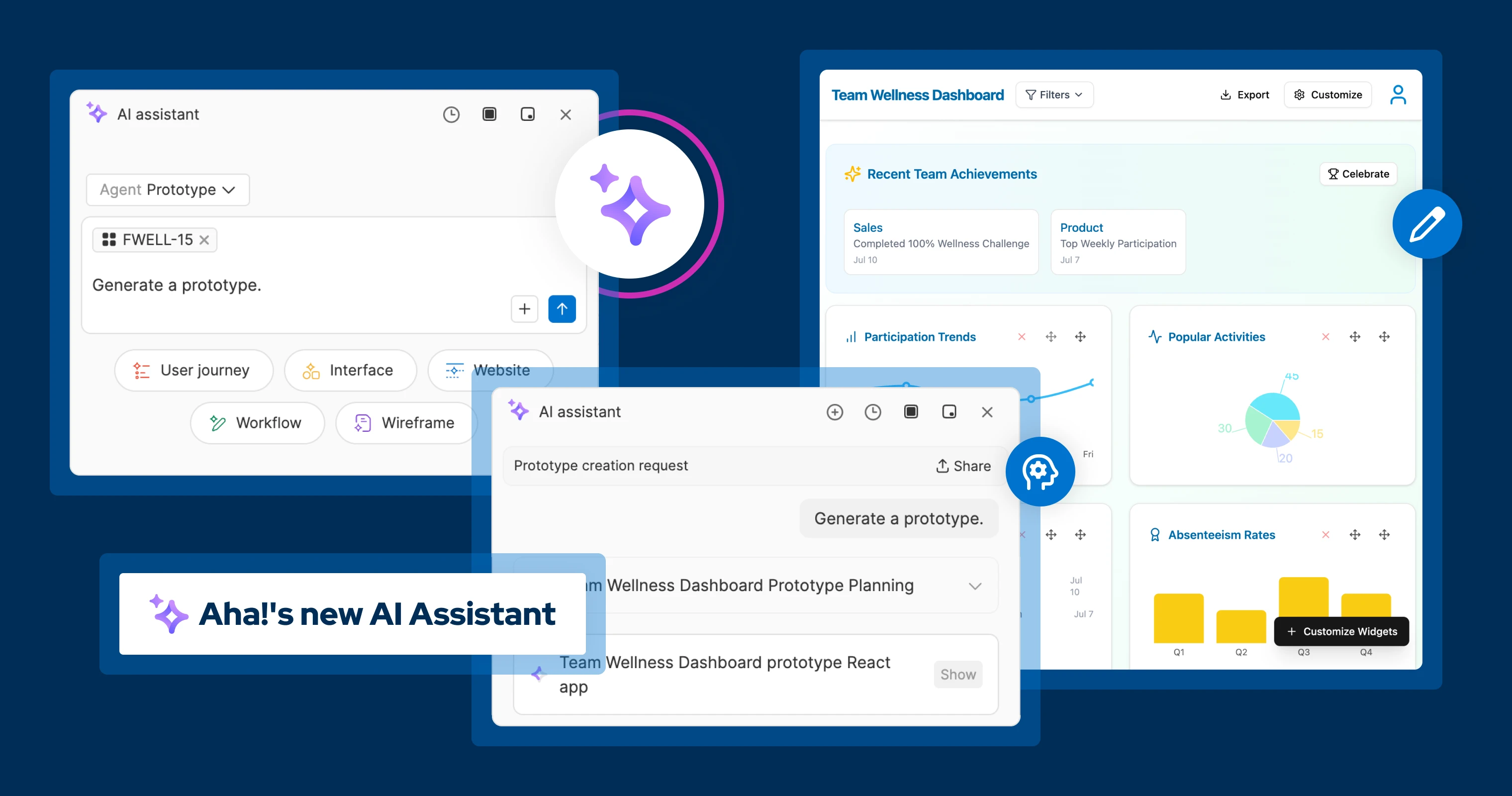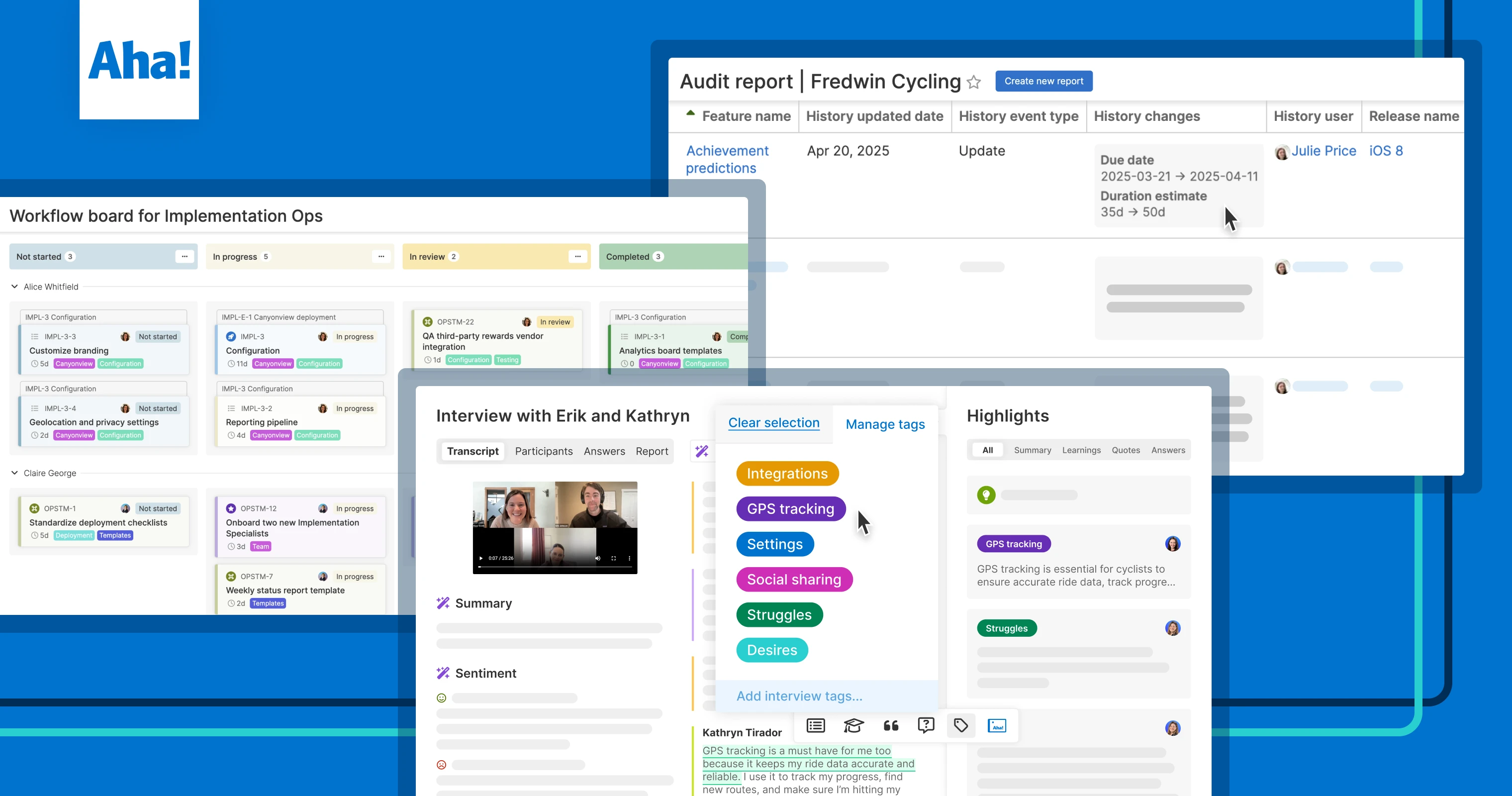
Talking to customers regularly is one of the simplest ways to improve product discovery — and it does not have to be complicated. | Photo by Jodi B Photography
This is the product discovery process we use at Aha!
There are lots of frameworks and theories about how to do product discovery well. Some offer genuinely useful structure. Others are more conceptual — better suited to workshops than day-to-day product decisions. If you are already doing customer interviews (or want to do more of them), you probably do not need a new model. You need a few practical ways to get better without slowing the team down.
Discovery gets sharper the closer you stay to real conversations.
Understanding what customers need is how you figure out the right thing to build. That means doing research, connecting with people, and making confident decisions based on what you learn.
I often see people ask for advice online and get flooded with input: book recommendations, lengthy anecdotes, and links to paywalled classes. It is hard to know what is useful and easy to wonder if you will get it wrong. Of course, expanding your knowledge is great. But better discovery does not require a full reinvention of your process.
My advice? Do not overthink it. Start talking to customers. Record what you learn. Focus on building a regular habit of listening to the people who pay for your product, because that is where real insight comes from.
The goal is to understand who you are building for and what matters to them — so you can make better product decisions, faster.
At Aha! we are not shy about sharing how we work. And we figured it would help to share a straightforward example of how we approach customer interviews — one of the most powerful ways to learn what customers really need.
Here's a rundown of the process we recommend using Aha! Discovery:
1. Build and grow a customer research database
At a fundamental level, effective interviews need two things: the right people and a clear plan. It is a good idea to add structure around both from the start. First, create a customer database to manage who to talk to and track outreach. This will also help you locate completed interviews later on.
Tips for adding contacts:
Look to your existing CRM tools, like Salesforce, for potential research participants.
Categorize contacts in your database by segment or industry.
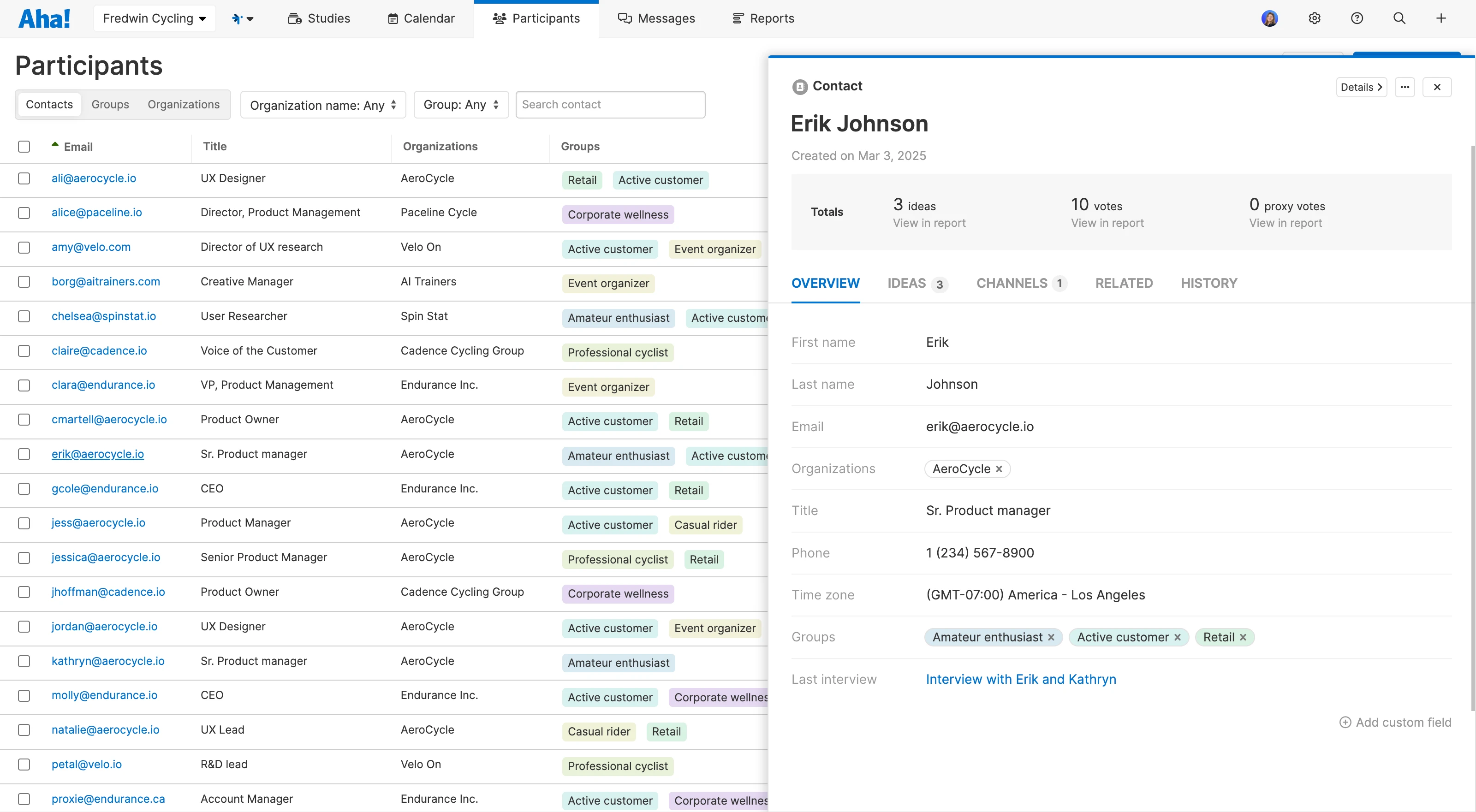
You can build a research participant database in Aha! Discovery. Here's an example of what that looks like.
Related:
2. Set up a research study
Next up, we recommend organizing a research study to manage the details of your plan. A study will house key information like your research objectives and assumptions, plus the individual interviews and insights to come.
Key setup steps:
Note the type of discovery (e.g., feedback, usability, etc.) when you create a study.
Link to relevant usage reports, support tickets, customer ideas, or external articles that sparked your discovery.
Related:
3. Define your customer research objective
Once you have a basic structure in place, get clear on what you want to learn. Set a specific objective for each study — this helps focus your research and guides decisions like who to contact and what to ask.
A few ways to sharpen your focus:
Know what makes a good research goal (and how to spot bad ones).
Note your assumptions alongside your objectives. This surfaces any biases before you start interviews.
Related:
4. Recruit the right customers to interview
Superfans and tough critics are easy to find. But the loudest voices are not always the right ones to talk to for product discovery. Sometimes, the customers who use your product the least have the most surprising insights to offer. It all depends on what you want to learn.
How to streamline outreach:
Draft macro templates for faster, more consistent outreach.
Set up a self-serve scheduling page to reduce back-and-forth.
Use a dedicated calendar view for the team's research rather than adding interviews to personal calendars ad hoc.

You can schedule customer interviews right from the research center in Aha! Discovery.
Related:
5. Set up your script, questions, and artifacts
A good script should be a guide for your discussion — not something to follow verbatim. But writing one can help you frame what you want to say. At a minimum, decide on a list of must-ask questions. This will help you stay on track and makes responses easier to compare across your research.
Make the most of your prep:
Layer in a "why?" as much as you can — it is a simple and effective follow-up to most responses.
Watch for hypothetical language (such as "would this work … " or "do you like … ") in your script. Ask about specific behavior instead.
Prepare a prototype or wireframe for users to react to. Bonus: Try using AI to whip something up.
Related:
6. Conduct customer interviews
Now for the fun part: talking to customers and channeling your inner journalist.
All your planning will help you feel confident in what to say. But some nerves are normal. Just remember that if a customer agreed to an interview, it means they care about what you are building.
Keep these tips in mind:
Let your customers do most of the talking.
Keep interviewing until you start to hear the same responses — then, you know you have enough input to work with.
Jot down one thing that surprised you after every session.
Upload transcripts to your research center right away. And tag key moments while conversations are fresh.
Use a view like this one to manage customer interviews in Aha! Discovery.
Related:
7. Analyze the results of your research with the AI assistant
Once interviews are done, make time to synthesize what you heard. Our AI assistant can help. The work of organizing your findings is what turns feedback into something useful.
To make analysis easier:
Run an AI analysis on your transcripts to pull out quotes, learnings, and common sentiment.
Create an insights report for each study to highlight the top takeaways.
Work on building a narrative — turn your findings into a logical story stakeholders can follow.
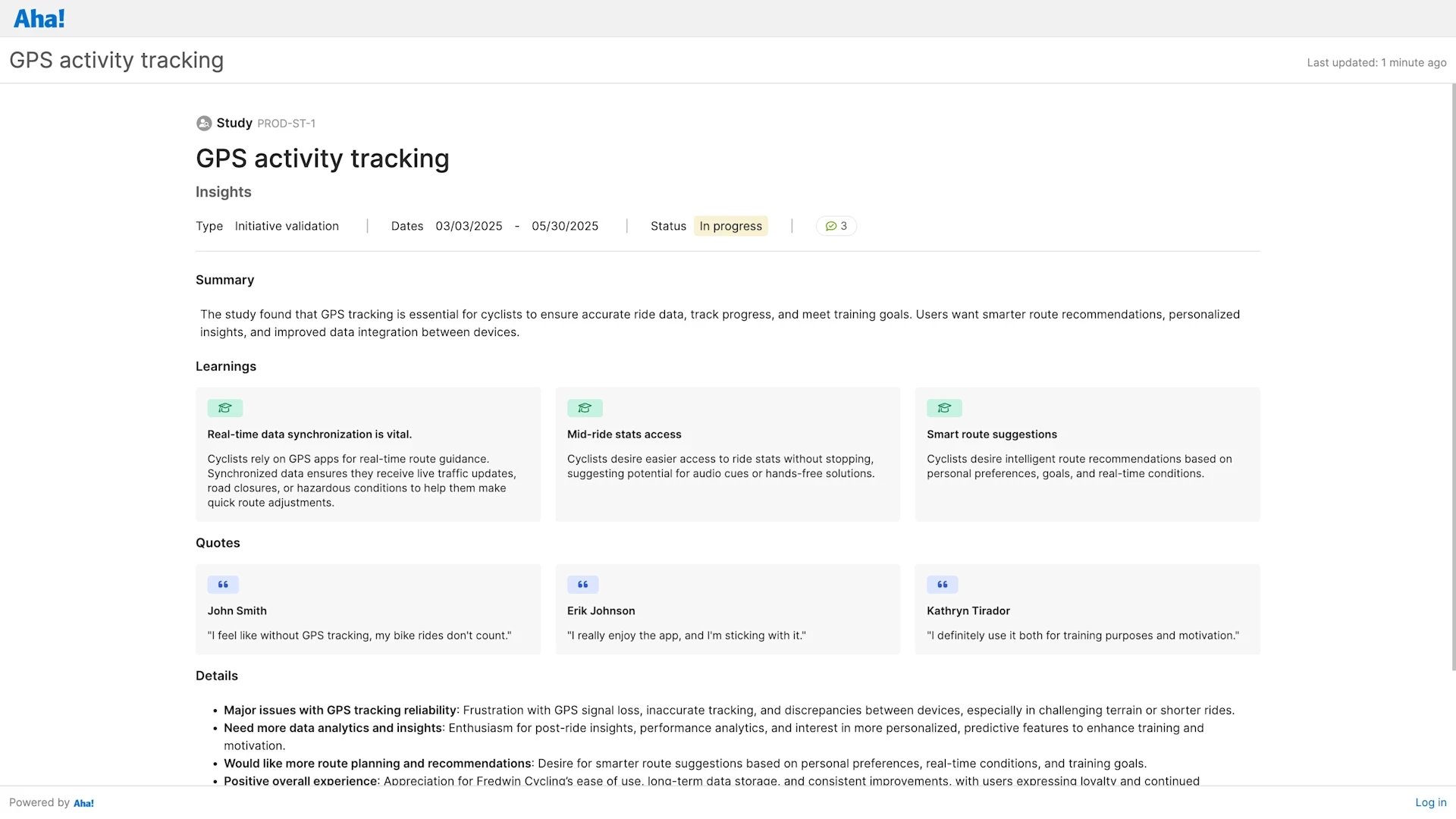
You can present research findings to your team using an insights report in Aha! Discovery.
Related:
8. Link your research insights directly to initiatives, features, and ideas
This last step is arguably the most important. (Otherwise, what is it all for?) It is no good to let learnings languish in a stakeholder presentation. Take what you have discovered — the exciting, surprising, even harsh feedback — and put it to work on your roadmap.
Ways to apply what you heard:
Map discovery insights directly to related initiatives or features, or create new ideas.
Axe any plans that are at odds with what your customers really need. (It is better to pivot than build the wrong thing.)
Close the loop. Share gratitude with participants and let them know how their input is shaping the product.
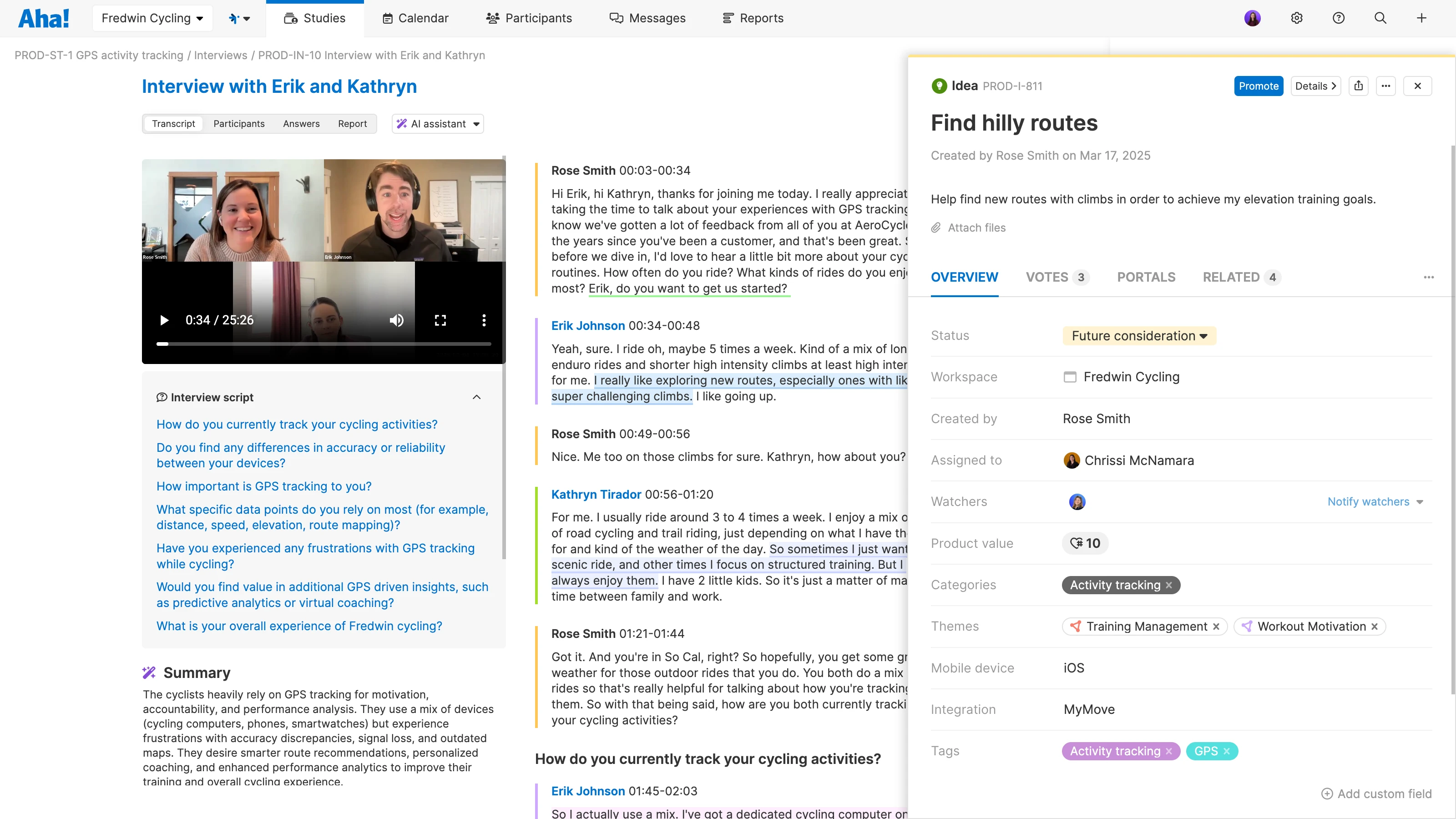
An example of how to turn interview insights into real product ideas in Aha! software.
Related:
Consistency beats complexity — especially in product discovery.
Your discovery process does not need to be perfect. What matters is consistency. A steady rhythm of interviews will sharpen your thinking, reveal what customers truly need, and guide smarter product decisions. If our team's customer interview process was helpful, consider reading our product newsletter — we share practical tips and product updates there regularly.
Jump-start customer interviews and discover key product insights. Start a free trial of Aha! Discovery today.


